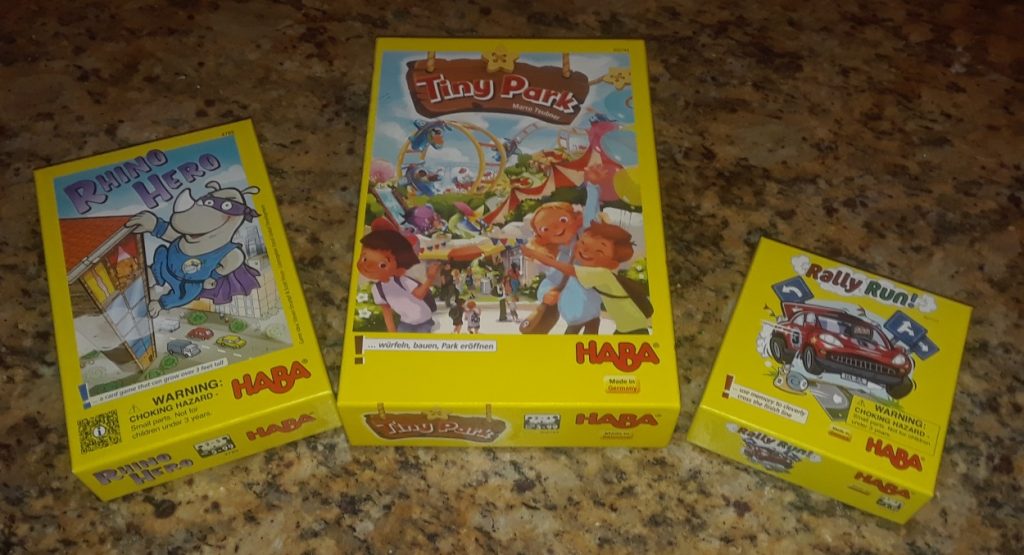Late last year I tried to turn my four year old daughter into a proper hex-and-counter wargamer by running her through the first few scenarios of Advanced Squad Leader, but she just cannot ever remember to pop smoke before rushing a full squad through a lane open to fire by a squad support weapon. Kids these days, I tell ya!
Having learned my lesson, this past Christmas focused on a hunt for games suitable for helping her move beyond the realm of Candyland. Candyland is a fantastic game – it is the perfect introduction to gaming, what with its imminently relatable fluff and its focus on the core game concepts of taking turns, obeying the dictates of the randomizer*, and looking forward in the game. “Oh, I hope I get a blue card on the first turn so that I can take that shortcut,” is music to a gaming Dad’s ears.
After a few months of learning colors and making no decisions, she was ready for something a little more involved, and so my Christmas gift list included a healthy dose of games that could help up the complexity just enough for her without being overwhelming. In the end, we found three, and the best part of the hunt was that I didn’t have to give any money to Hasbro to find them.

Rhino Hero is a basic card stacking game. Players are dealt five cards and have to play them as the ceiling/roof of a building. A separate stack of folded cards is used to build the walls of the tower. To complicate matters, some of the roof cards have a rhino icon which forces the next player to carefully remove and place a small rhino-shaped block onto the top of the tower. It’s a bit like Jenga, but with cards and with the advantage of forcing players to choose the order in which to play their cards. The little bit of strategy is less important than the opportunity this game provides for challenging a child’s manual dexterity, and the fact that even an experienced adult sometimes fumbles the ball means that the kids have a pretty good chance at learning how to be a good winner when playing against their parents.
Tiny Park is a ‘fill in the card’ version of Yahtzee game where players roll five dice to generate resources that they can use to buy attractions for their tiny park. Players have three chances to get the resources needed to buy an attraction, and the attractions have Tetris-like shapes, which forces the players to plan ahead when building their rides. Unlike the other two games, this one lacks any player interaction and becomes more of a race to finish your park first, but that provides ample opportunity for teaching your child how to plan ahead, and how to judge risks as they select which dice to reroll. The import of teaching them how to make these small scale decisions occurs in Tiny Park without the pressure of adversarial competition, making it a prefect introduction to the basics in a low pressure gaming environment.
Rally Run mixes the pathfinding fun of Streetcar style game with the memory checks of the Match Game. Players have wooden car tokens that have to race to the center of a five card by five card grid, retrieve a fuel can and finish line, and then race for the win. The cars move from one over-turned tile to the next, with the path of the card being revealed only when a car is on the tile. Instead of moving – such as when blocked in by the dreaded dead-end tiles – players may swap the positions of two of the face-down cards. A full version of the game with a seven by seven grid might make for a better adult version of the game, but the small size and fast play make this perfect for younger children, and the randomness of the cards help level the playing field, making this a perfect game for older kids to enjoy as well.
All three games are light on rules, and a little heavy on the luck, which makes them perfect starter games for children ready to move up to the next level of board games. They all play in a matter of a few minutes, making them perfect for those whose attention spans are growing, but not quite ready for a full-on game of Diplomacy. And they are all pretty cheap – I think 15 bucks is the most I spent on any of them – which makes introducing them to your gaming table a low-risk investment for you.
I’ll definitely be giving more HABA games a shot in the future.
*I’ve gamed with more than a few DMs who could use a Candyland refresher on that score!
